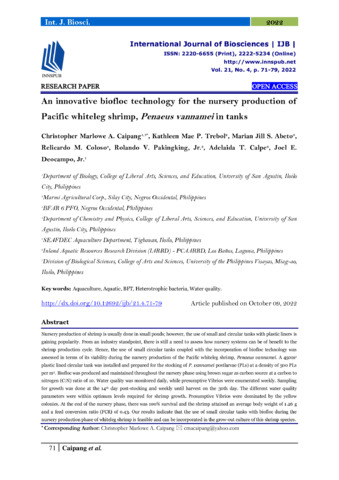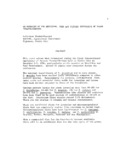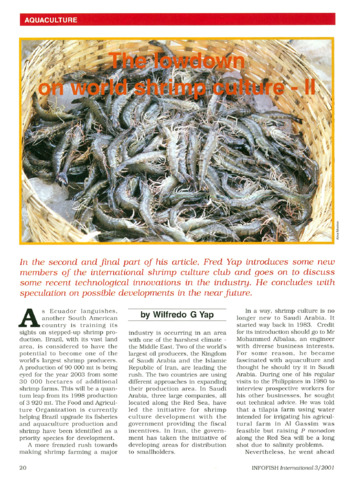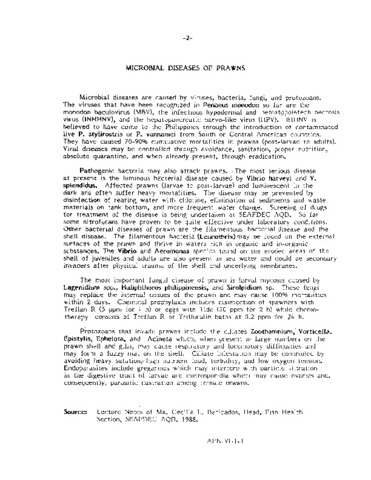An innovative biofloc technology for the nursery production of Pacific whiteleg shrimp, Penaeus vannamei in tanks

Associated URL
www.innspub.netកាលបរិច្ឆេទ
2022-10-09អ្នកនិពន្ធ
Page views
136ទិន្នន័យមេតា
មើលកំណត់ត្រាលម្អិតនៃធាតុCited times in Scopus
Share
អរូបី
Nursery production of shrimp is usually done in small ponds; however, the use of small and circular tanks with plastic liners is gaining popularity. From an industry standpoint, there is still a need to assess how nursery systems can be of benefit to the shrimp production cycle. Hence, the use of small circular tanks coupled with the incorporation of biofloc technology was assessed in terms of its viability during the nursery production of the Pacific whiteleg shrimp, Penaeus vannamei. A 450m2 plastic lined circular tank was installed and prepared for the stocking of P. vannamei postlarvae (PLs) at a density of 500 PLs per m2. Biofloc was produced and maintained throughout the nursery phase using brown sugar as carbon source at a carbon to nitrogen (C:N) ratio of 10. Water quality was monitored daily, while presumptive Vibrios were enumerated weekly. Sampling for growth was done at the 14th day post-stocking and weekly until harvest on the 30th day. The different water quality parameters were within optimum levels required for shrimp growth. Presumptive Vibrios were dominated by the yellow colonies. At the end of the nursery phase, there was 100% survival and the shrimp attained an average body weight of 1.26 g and a feed conversion ratio (FCR) of 0.43. Our results indicate that the use of small circular tanks with biofloc during the nursery production phase of whiteleg shrimp is feasible and can be incorporated in the grow-out culture of this shrimp species.
Suggested Citation
Caipang, C. M., Trebol, K. M. P., Abeto, M. J. S., Coloso, R. M., Pakingking, R. V., Jr., Calpe, A. T., & Deocampo, J. E., Jr. (2022). An innovative biofloc technology for the nursery production of Pacific whiteleg shrimp, Penaeus vannamei in tanks. International Journal of Biosciences , 21(4), 71-79. https://doi.org/10.12692/ijb/21.4.71-79
ប្រធានបទ
Taxonomic term
បណ្តុំបណ្តុំ
- AQD Journal Articles [1221]
Related items
Showing items related by title, author, creator and subject.
-
An overview of the nutrition, feed and feeding techniques of prawn penaeid/shrimps
Piedad-Pascual, Felicitas (Philippine Council for Aquatic and Marine Research and Development, 1989)This paper echoes what transpired during the first International Conference of Penaeid Prawns/Shrimps held in Iloilo City in December 4-7, 1984, particularly on the Nutrition nd Feed Development. Around 25 papers were ... -
The lowdown on world shrimp culture - II
Yap, Wilfredo G. (INFOFISH, 2001)This paper introduces some new members of the international shrimp culture club and goes on to discuss some recent technological innovations in the industry, particularly the polyculture of tilapia (mainly Oreochromis ... -
Microbial diseases of prawns
Southeast Asian Fisheries Development Center, Aquaculture Department (Aquaculture Department, Southeast Asian Fisheries Development Center, 1988)





